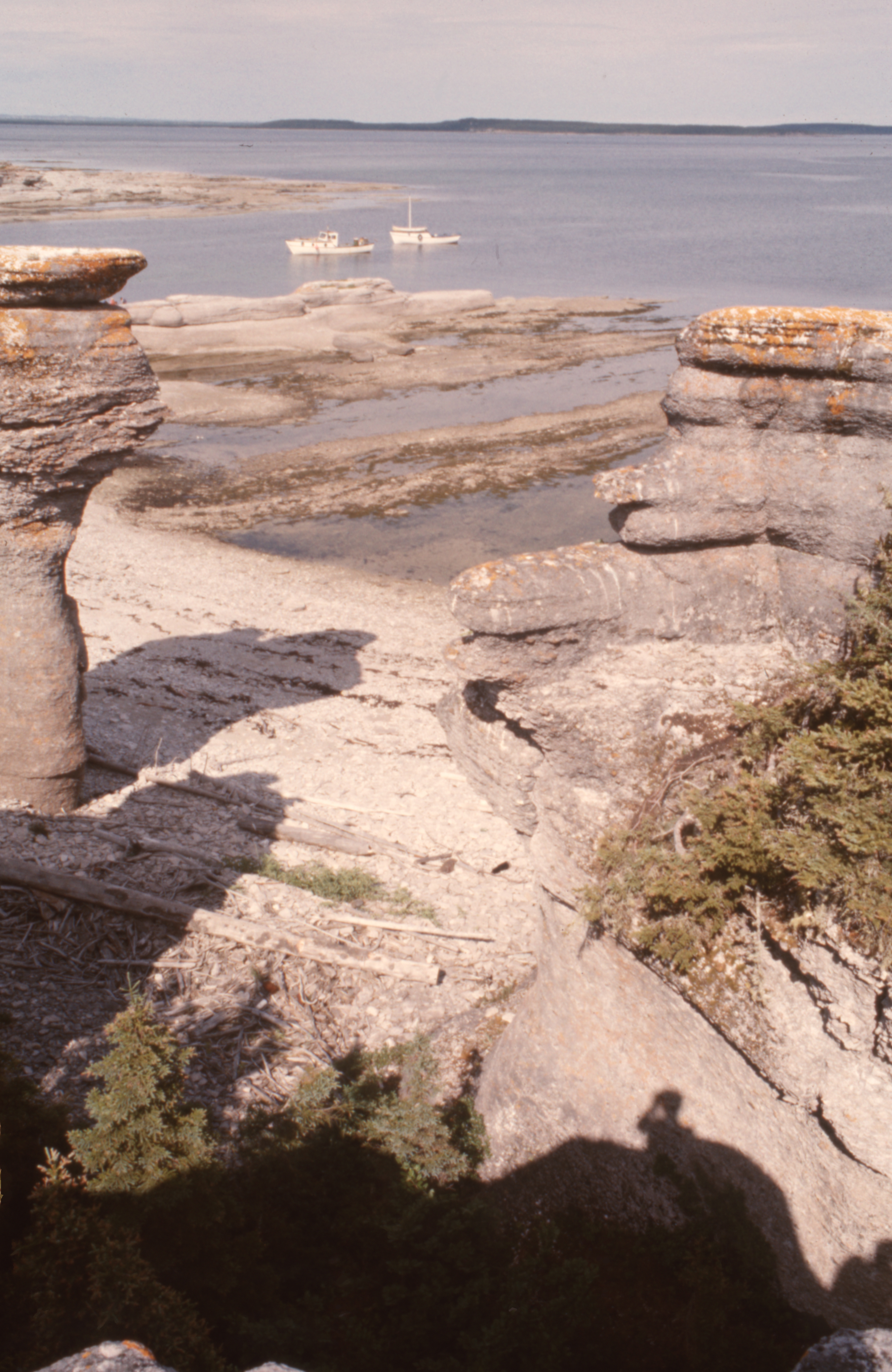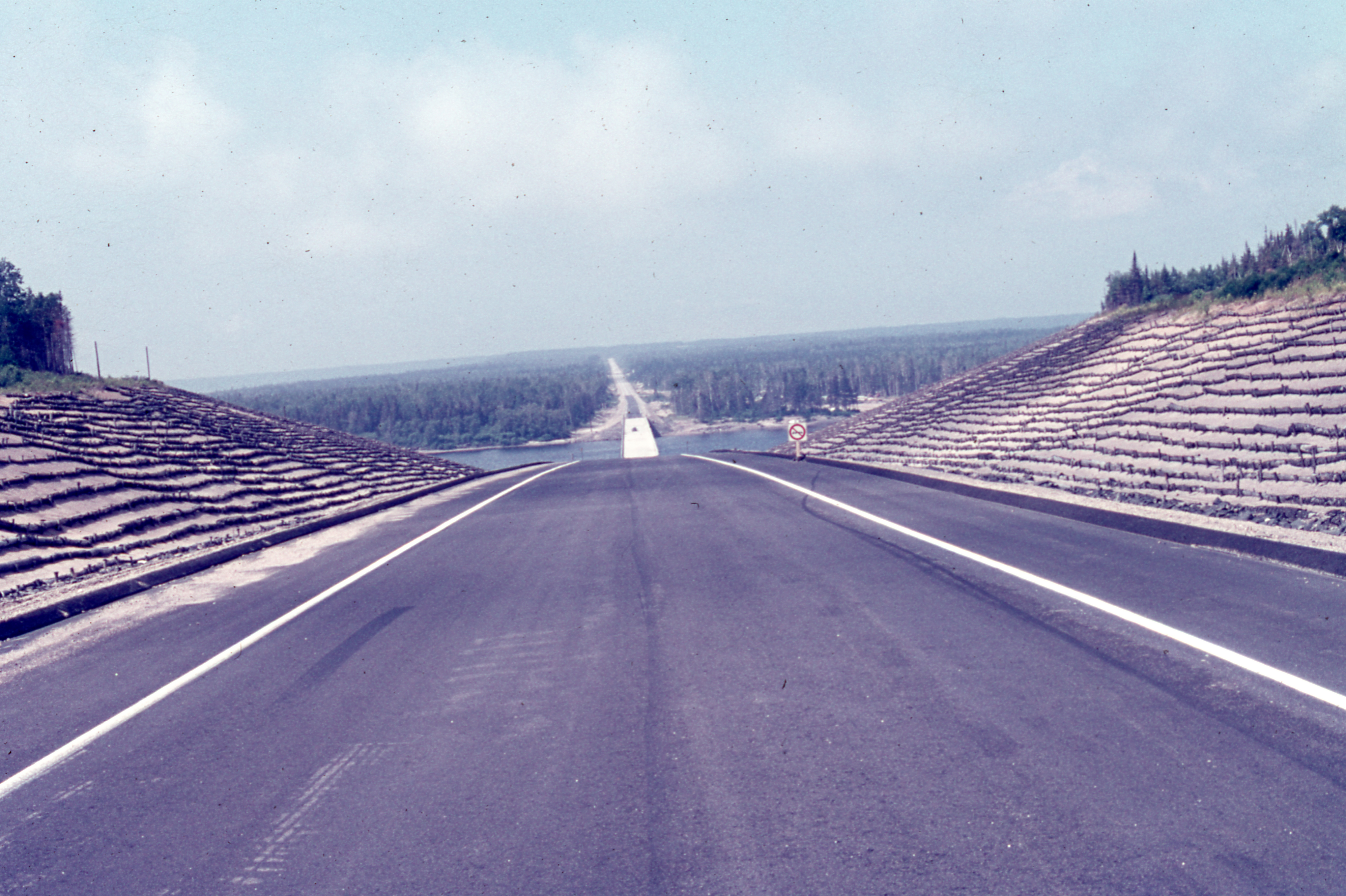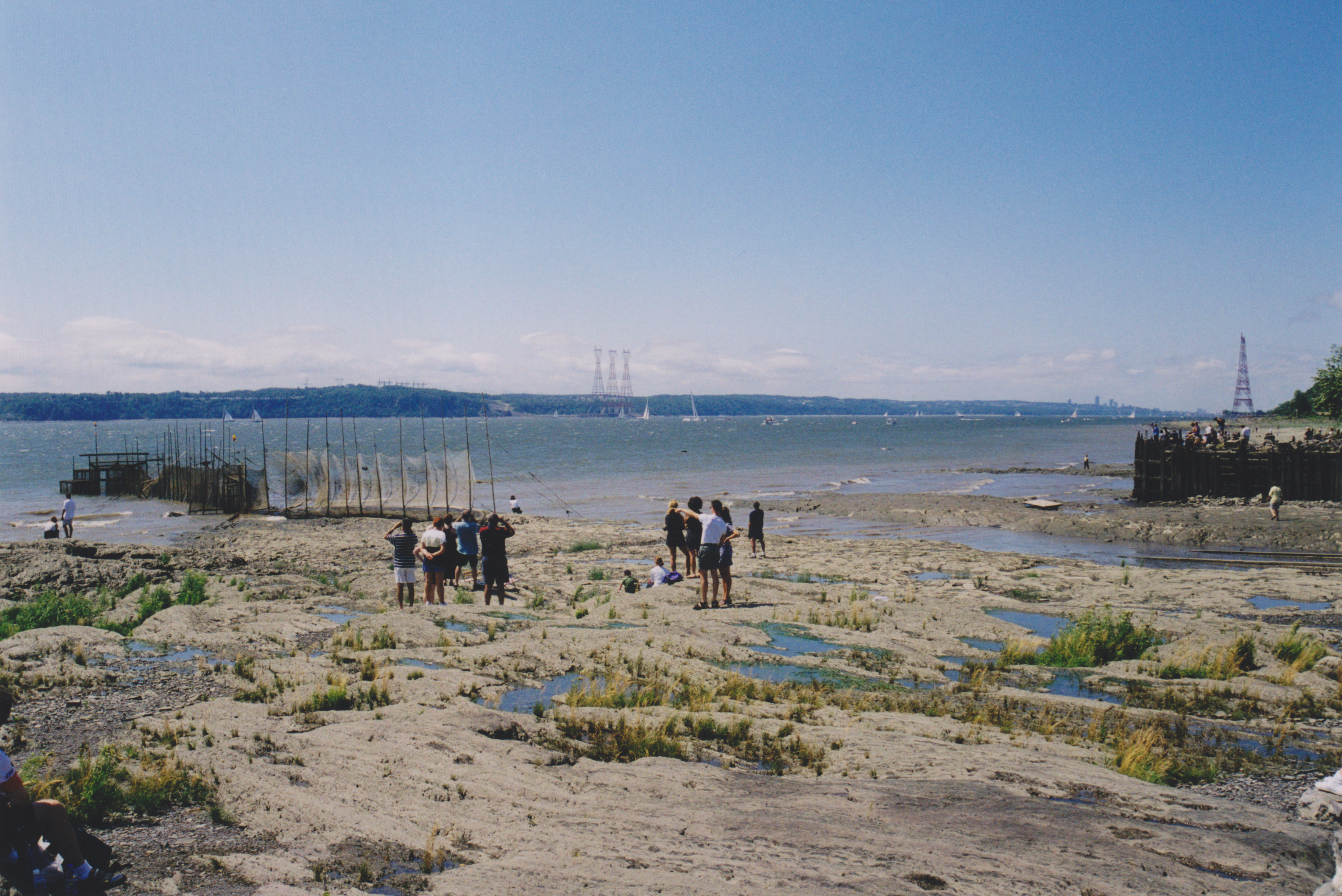|
Sept-Rivières Regional County Municipality
Sept-Rivières (, "Seven-Rivers") is a regional county municipality of Quebec, Canada, in the Côte-Nord region. Its county seat is Sept-Îles. The census groups Sept-Rivières RCM with neighbouring Caniapiscau Regional County Municipality into the single census division of Sept-Rivières—Caniapiscau. In the 2021 Canadian census, the combined population was 38,240. The population of Sept-Rivières RCM itself was 34,358, of whom the vast majority live in the city of Sept-Îles. Geography Sept-Rivières is located in the central part of Côte-Nord. It is bordered by the regional county municipalities of Manicouagan, Caniapiscau, and Minganie, as well as by the southwest corner of Labrador and by the Gulf of Saint Lawrence. It is mostly covered by the Laurentian Mountains. It is a very sparsely populated and undeveloped region with its population highly concentrated along the coast, mostly at Sept-Îles (about three-fourths of the population). It allegedly takes its name fr ... [...More Info...] [...Related Items...] OR: [Wikipedia] [Google] [Baidu] |
Regional County Municipality
The term regional county municipality or RCM (, , MRC) is used in Quebec, Canada to refer to one of 87 county-like political entities. In some older English translations they were called county regional municipality. Regional county municipalities are a supralocal type of regional municipality, and act as the local municipality in Unorganized area#Quebec, unorganized territories within their borders. The system of regional county municipalities was introduced beginning in 1979 to replace the List of former counties of Quebec, historic counties of Quebec. In most cases, the territory of an RCM corresponds to that of a Census geographic units of Canada, census division; however, there are a few exceptions. Some local municipalities are outside any regional county municipality (''hors MRC''). This includes some municipalities within Urban agglomerations in Quebec, urban agglomerations and also some aboriginal lands, such as Indian reserves that are enclaves within the territory of ... [...More Info...] [...Related Items...] OR: [Wikipedia] [Google] [Baidu] |
Minganie Regional County Municipality
Minganie () is a regional county municipality on the north shore of the Gulf of St. Lawrence, in the Côte-Nord region of Quebec, Canada. Its territory includes Anticosti Island. Toponymy Both the largest (128,473 km²) and the second least populated, the regional county municipality of Minganie extends from Labrador to the middle of the Honguedo Strait in the St. Lawrence River and includes the hinterland of Le Golfe-du-Saint-Laurent RCM and Anticosti Island. Construction workers, transport workers, miners, fishermen and trappers are also found there in larger proportions than in Quebec in general. The origins of Minganie's population can be traced to Innu, Acadian and Gaspesians pioneers and its new residents who arrived via Route 138 (The Whale Route - Route Jacques-Cartier), opened in 1976. Administration The RCM administration is seat is Havre-Saint-Pierre. It has an area of according to Quebec's '' Ministère des Affaires municipales, des Régions et de l'Occupat ... [...More Info...] [...Related Items...] OR: [Wikipedia] [Google] [Baidu] |
Lac-Walker, Quebec
Lac-Walker is an unorganized territory in the Côte-Nord region of Quebec, Canada. It makes up more than half of the Sept-Rivières Regional County Municipality. The eponymous Lake Walker, named after Hovenden Walker, is about long and has steep rock walls. It is located in the Port-Cartier-Sept-Îles Wildlife Reserve, that offers many outdoor recreation activities. Demographics Private dwellings occupied by usual residents (2021): 50 (total dwellings: 59) See also * List of unorganized territories in Quebec The following is a list of unincorporated areas (''territoires non organisés'') in Quebec. There are no unorganized territories in the following administrative regions: Centre-du-Québec, Chaudière-Appalaches, Estrie, Laval, Montérégie, Mont ... References External links Unorganized territories in Côte-Nord Sept-Rivières Regional County Municipality {{Quebec-geo-stub ... [...More Info...] [...Related Items...] OR: [Wikipedia] [Google] [Baidu] |
Port-Cartier
Port-Cartier () is a city in the Côte-Nord region of Quebec, Canada. It is located on the north shore of the St. Lawrence River at the mouth of the Aux-Rochers River, southwest of Sept-Îles, Quebec. Port-Cartier had a population of 6,516 at the 2021 Canadian census. It has a land area of , ranking 27th in area among all Canadian cities and towns. Besides Port-Cartier itself, the communities of Rivière-Pentecôte (), Pointe-aux-Anglais (), Baie-des-Homards (), and Grand-Ruisseau () are also within its municipal boundaries, all located along Quebec Route 138. History In 1915, Colonel Robert R. McCormick, owner of the Chicago Tribune, visited the Rochers River area to evaluate its forest potential. Soon after, a settlement was established on the west side of the mouth of this river, originally called Shelter Bay. [...More Info...] [...Related Items...] OR: [Wikipedia] [Google] [Baidu] |
Manitou River (Quebec)
The Manitou River () is a river flowing in the unorganized territory of Lac-Jérôme and in the municipality of Rivière-au-Tonnerre, in the Minganie Regional County Municipality, in the Côte-Nord region in the province of Quebec, Canada. It flows through largely unspoiled wilderness, and has spectacular falls nears its mouth. Although there is hydroelectric potential, projects to develop the river in this way have met popular resistance, and instead it has been proposed to protect the river with a national part or indigenous reserve. Course The Manitou River has its origin in Lac Caobus in the unorganized territory of Lac-Jérôme, Minganie Regional County Municipality, and lower down flows through the municipality of Rivière-au-Tonnerre, Minganie. The river flows south, widening in two places to form Lake Manitou and Eudist Lake. It reaches the Saint Lawrence in the Canton de Coopman, near the community of Manitou halfway between Sept-Îles and Havre-Saint-Pierre. The r ... [...More Info...] [...Related Items...] OR: [Wikipedia] [Google] [Baidu] |
Pigou River
The Pigou River () is a salmon river in the Côte-Nord region of Quebec, Canada. It empties into the Gulf of Saint Lawrence. Location The Pigou rises on the Laurentian Plateau and empties into the Gulf of Saint Lawrence about east of Sept-Îles. The river rises in Petit lac Travers at an elevation of . It is about long. The river flows south through the unorganized territory of Rivière-Nipissis. The East Pigou River, a small tributary, enters about from its mouth. The mouth of the Pigou River is in the municipality of Sept-Îles, Sept-Rivières. Name The name "Pigou" may come from the Algonquin language ''pikiou'' meaning "gum", referring to a place where resin is extracted from fir or pine, or from the Innu language ''pikiou'' meaning "fish". The name is also used for nearby islands and a fishing bank. Another theory, less likely, is that "pigou" is an old navy term for a hanging candle holder. The Pigou River is first mentioned by name in 1892 by the surveyor C. C. Dub ... [...More Info...] [...Related Items...] OR: [Wikipedia] [Google] [Baidu] |
Aux Rochers River
Aux Rochers River (, , ''Rocky River''), is a river in Sept-Rivières Regional County Municipality, Côte-Nord, Quebec, Canada. It drains an area of . It is a tributary of the Gulf of Saint Lawrence Description The Aux Rochers River is in Port-Cartier, Sept-Rivières. It empties into the Gulf of Saint Lawrence in the town of Port-Cartier. One of its tributaries, the Gravel River (Quebec), Gravel River, is sometimes also called the Aux Rochers River. The Gravel flows south to the long Lake Walker. The Aux Rochers River proper leaves the south end of Lake Walker and flows southeast for a further . The river is hard to navigate due to a strong current. It also contains many rocks, hence its name. Some of the smaller rocks move to different places in the river each year. The lower river valley is used by southern section of the Cartier Railway, which then runs along the east shore of Lake Quatre Lieues before following the valley of the MacDonald River (Côte-Nord), MacDonald River, a ... [...More Info...] [...Related Items...] OR: [Wikipedia] [Google] [Baidu] |
Pentecôte River
The Pentecôte River (, ) is a river in the Côte-Nord region or the province of Quebec, Canada. It is a tributary of the Gulf of Saint Lawrence, which it enters beside the community of Rivière-Pentecôte. Location and name The Pentecôte River is an important river in the Port-Cartier–Sept-Îles Wildlife Reserve. It is in the municipality of Port-Cartier in the Sept-Rivières Regional County Municipality, Côte-Nord, Quebec. In the Innu language the river was called ''Mistecapiu'', meaning "Steep Rock". The present name may be attributed to the fact that Jacques Cartier arrived in the area on the Christian holy day of Pentecost (''Pentecôte'' is French for Pentecost). There is a reference to the river in a document by Louis Jolliet from 1685 in which he refers to a river named "Pannecoste". A 1695 map by Deshayes shows the "Rivière de la Pentecoste". In 1744 the cartographer Bellin wrote "R. Michigabiou or R. de la Pentecôte; it is also called R. Sainte Marguerite." Envi ... [...More Info...] [...Related Items...] OR: [Wikipedia] [Google] [Baidu] |
Trinité River
The Trinité River (, ), or Grande Trinité River is a river in the Côte-Nord region of Quebec, Canada. Salmon fishing is allowed, subject to limits. Course The Trinité River is in Baie-Trinité, Manicouagan, Quebec. It is long. The river runs through a winding valley in the Canadian Shield before entering the Gulf of Saint Lawrence beside the village of Baie-Trinité. There are a few small lakes in the northern, Sept-Rivieres part of the river basin, including Lac Washamahwun, Lac Lanctot, Lac Rimouski and Lac Fox. The river flows slowly through 67 shallow fishing holes interspersed with large rocks, with a steeper section near the end where it runs faster. The river is accessible from Quebec Route 138. Environment A map of the Ecological regions of Quebec shows the upper portion of the river rising and flowing south through the eastern spruce/moss domain of the boreal zone. Most of the river flows through the fir/white birch domain of the boreal zone. The average annual te ... [...More Info...] [...Related Items...] OR: [Wikipedia] [Google] [Baidu] |
Sainte-Marguerite River (Sept-Îles)
The Sainte-Marguerite River (, ; Saint Margaret River) is a long river in the Côte-Nord region of Quebec, Canada. It flows into the Gulf of Saint Lawrence to the west of Sept-Îles. There are traces of human activity along the river from 4,000 years ago. Pulp and paper exploitation in the river basin began in the early 20th century, followed by mining. The river has a large hydroelectric power dam, the Denis-Perron dam, that contains a reservoir that is long. Course The Sainte-Marguerite River is in the middle Côte-Nord, between Baie-Comeau and Havre-Saint-Pierre. The catchment area is . It lies between the basins of the Dominique River to the west and the Rapides River to the east. The river originates in the northeast of the canton of Hind. It rises to the northeast of the Petit lac Manicouagan. From near the border with Labrador, the river flows first through a mountainous region, and then for more than through a coastal plain. It is long. Much of the southern part of ... [...More Info...] [...Related Items...] OR: [Wikipedia] [Google] [Baidu] |
Moisie River
The Moisie River () is a river in eastern Quebec. Known as the Nahanni of the East, it is a wild river of North America. It has been proposed to protect the river with the Moisie River Aquatic Reserve. Course The Moisie River basin lies between the basins of the Rapides River to the west and the Matamec River to the east. It covers an area of . The Moisie flows south from Lake Opocopa near the Labrador border to the north shore of the Saint Lawrence River east of Sept-Îles, Quebec. The town of Moisie is located at its mouth. The river is in length, which is calculated from the most commonly used starting point of canoe trips, bridge of highway 389 over Pékans River (at ) is 373 km. Moisie tributaries include: * Aux Pékans River ** Carheil River (via Pékans) * Nipissis River * Caopacho River * Ouapetec River * Joseph River Name The origin of the name are unknown, but researchers have speculated that the river might have been named after an explorer or ... [...More Info...] [...Related Items...] OR: [Wikipedia] [Google] [Baidu] |
Saint Lawrence River
The St. Lawrence River (, ) is a large international river in the middle latitudes of North America connecting the Great Lakes to the North Atlantic Ocean. Its waters flow in a northeasterly direction from Lake Ontario to the Gulf of St. Lawrence, traversing Ontario and Quebec in Canada and New York (state), New York in the United States. A section of the river demarcates the Canada–United States border, Canada–U.S. border. As the primary Discharge (hydrology), drainage outflow of the Great Lakes Basin, the St. Lawrence has the List of rivers by discharge, second-highest discharge of any river in North America (after the Mississippi River) and the 16th-highest in the world. The estuary of St. Lawrence, estuary of the St. Lawrence is often cited by scientists as the largest in the world. Significant natural landmarks of the river and estuary include the 1,864 river islands of the Thousand Islands, the endangered whales of Saguenay–St. Lawrence Marine Park, and the limestone ... [...More Info...] [...Related Items...] OR: [Wikipedia] [Google] [Baidu] |




